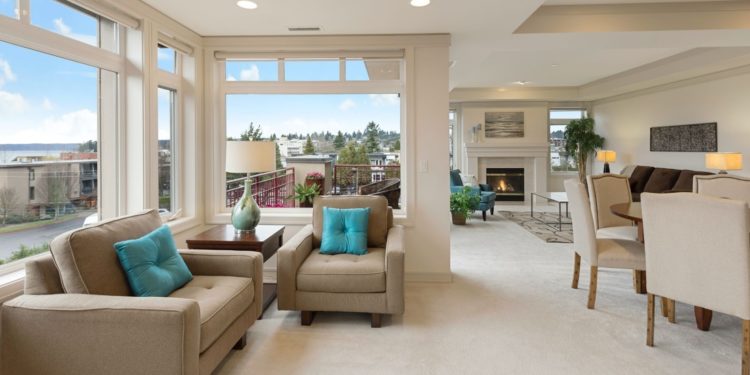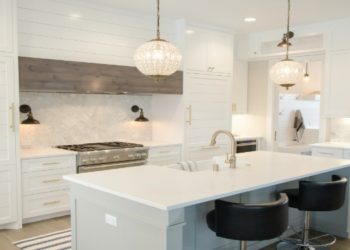When you move into a new home, there are often a lot of items on your to-do list. One of the most important things you can do at this time, however, is to focus on making your new house feel like a home. Whether it’s filling your shelves with favourite books or hosting a dinner party for all your friends and family, there are many ways to make yourself feel comfortable in your new abode. Here are just a few of the top tips for turning a house into a home.
Frame some familiar favourites
A blank canvas of bare walls can feel clinical and uninspiring. By adding framed personal touches, you can instantly add bundles of personality to bare walls, creating a more homely atmosphere. Of course, you can opt for new art (Etsy and Society6 both provide affordable prints), but for your home to buzz with cosiness, hang personal effects that evoke fond memories. This can be anything — from the vintage film poster you once purchased (to commemorate your seventeenth viewing of The Empire Strikes Back, or maybe that’s just us) to your favourite childhood football shirt.
However, for the sake of the walls, put down the Blu Tack! Unless you prefer to live like a student (though there’s nothing wrong with that), you should opt for framing your keepsakes to complement and protect your artwork. Moreover, to avoid the pitfalls of DIY framing, it is highly recommended to use the services of an expert company. London-based Soho Frames, for example, offer a bespoke service. They warn against certain DIY methods, stating: “all too often, we see masking tape or sellotape holding an artwork onto a board. The chemicals and oils that these tapes contain can stain the artwork and cause significant problems.”
Amplify the aroma
Have you ever stepped into the home of a friend, relative, or grandmother and noticed a distinct odour? A variety of factors might influence a home’s fragrance. The owners may have dogs, live near the sea, or cook regularly. Our homes carry many unique smells, from sprays of aromatic perfume to the unmistakable musk of our fur babies.
However, we often can’t smell our houses as strongly as others do. In short, this universal trait occurs because our home is usually perceived as a familiar and safe space by the brain, then filtered out as an unthreatening, unimportant scent.
The good news is, upon moving into a new building, you will effectively have a blank canvas to play with. Your new house is a fantastic opportunity to experiment with scent and create a bespoke atmosphere that best fits you. Add candles or diffusers, aromatic house plants, or get cooking up some delicious baked goods to delight your senses.
A little caveat, though: moving can be a fascinating experience for both children and pets. However, the direct correlation between memory and scent may unsettle a nervous animal or younger child. So try to provide a welcome balance between old and new. Tuck a well-loved blanket into a bed, burn a familiar scented candle, or spread spritzes of your signature perfume to soothe little noses.
Navigate to neighbourhood bliss
Sometimes, moving to a new area can feel as strange as a trip to a foreign destination, particularly if isolated from friends and family. A blend of exciting and scary, these temporary feelings of isolation can even be reminiscent of culture shock. However, there are simple things you can do to successfully navigate your neighbourhood and create harmony with your new surroundings.
According to recent statistics, UK residents typically know just four of their neighbours by name. So, make time and effort to introduce yourself to your neighbours properly. If you’re feeling confident, ask for advice on local hotspots. Most people should be happy to oblige and enjoy the camaraderie. Find out as much as you can about the local neighbourhood, whether you need to learn more about its schools, cafés or even its dog grooming services. You can also utilise Nextdoor, a supportive online community, to find more information about your area.
Blend in some barkitecture
Oh, to be a dog. Our obsession with furry friends has now even extended to ‘barkitecture’: animal-first home decor. According to data from Pinterest, the search for “luxury dog rooms” has risen a staggering 115% from last year and is set to increase. Of course, our feline companions are included in this trend, too, with four times as many searches for “catify your home” than in 2021. If you tumble down the Pinterest rabbit hole, expect spare rooms converted into doggie dens (complete with family “paw-traits”), miniature pet bedrooms nestled under staircases, and grooming parlours to rival a hammam spa.
Though it’s not for everyone, if you plan on redesigning or renovating your new house, you may enjoy adding a fun touch of barkitecture to reward your pampered pet. Or, if you are not yet a pet owner — consider adopting one. A well-loved animal will bring an abundance of energy and comfort to any home.
Create home-working harmony
Working from home — commonplace now for most office or business based workers — certainly has its perks. It’s less expensive, less tiresome, and generally welcomed by employees worldwide. However, it is essential to put in place some cognitive and architectural boundaries to differentiate the two areas.
Overworking at home can become a real problem, as “the average length of time an employee working from home in the UK is logged on at their computer has increased by more than two hours a day”, according to research from the Guardian. Creating a new home office is an excellent opportunity to rebalance the energy spent between deep work and homely delights. Experiment with colour psychology (think energising yellows and deep greens), inspiring visual aids, and mood lighting to enjoy your surroundings.
However, you may find that boundaries between work and home are harder to enforce if you lack physical space or struggle with your mental health. A smart foldable desk, which you can collapse and tuck away according to your schedule, is a valuable investment. As in any environment, a good sense of routine will help you balance work and play. You may wish to establish separate devices for work and home, use a clever app, or create a playlist designed purely for deep concentration.











































































